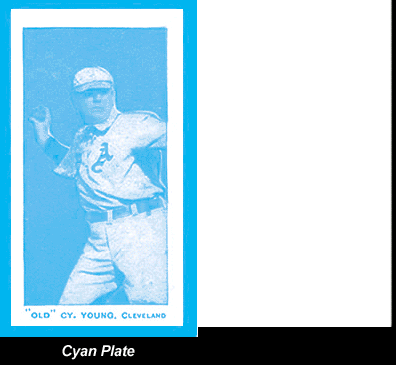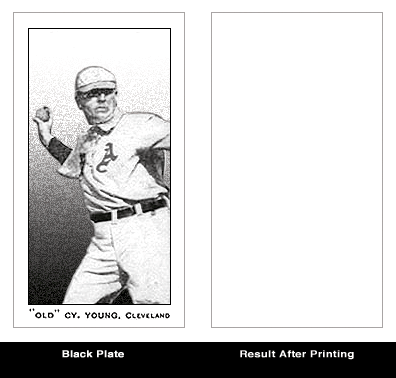Modern color printing method
Color printing today is achieved by the overlapping/association of 4 different colors of inks. It is called 4-color process printing and use the colors: cyan(lt. blue), magenta(red), yellow and black. The colors from color photos and artwork is separated into the 4 process colors and converted into continuous tone dot patterns. If a piece is printed well this dot pattern is "invisible" to the naked eye. When you look at the piece, you shouldn't see the dot pattern. Film is used to chemically create the printer's plate used for the piece. Each color is printed separately and in the USA, the first color printer is cyan, then magenta, yellow, black. In Europe, magenta is printed first. The inks never physically mix together. Your eye and the screening(dot) pattern make your eye do the mixing in your head, blue and yellow just "look" like green. No green is used in 4 color printing.

As stated above the color cyan is the first to be printed. Then magenta, yellow and black. After each plate I have you will also see how the printed card would look.
NOTE: To create the graphic, scanned the card and broke down the color via the computer thus skipping the process of screening and separating mechanically. Yes, a few steps were saved but I think you will get a basic understanding of how the process works.
